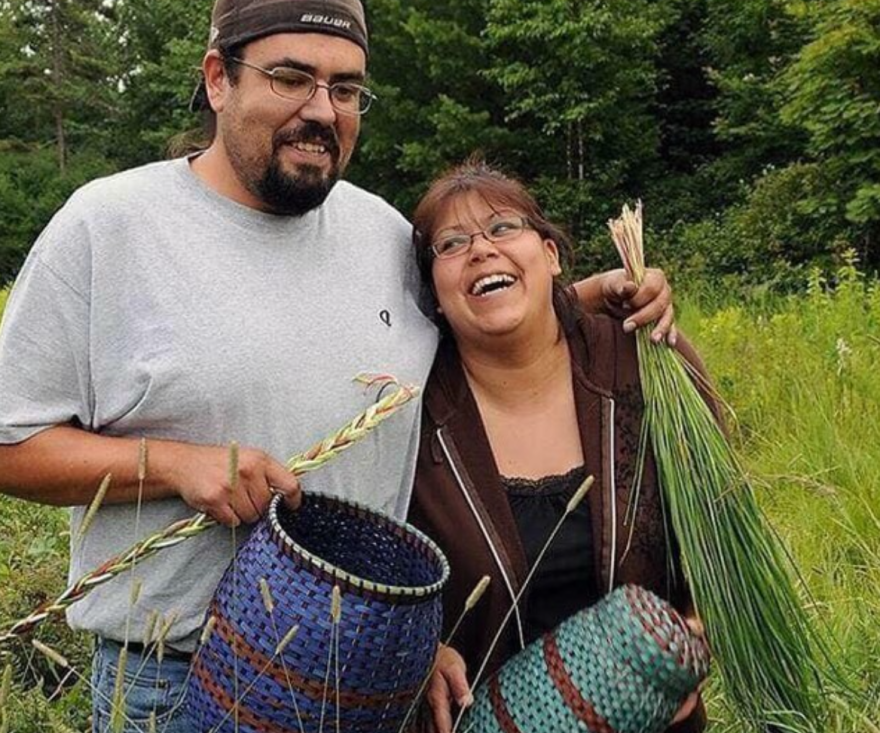Entering the woods of Michigan’s upper peninsula, Sarah Homminga follows the same steps as her ancestors: Offer tobacco before harvesting the ash tree. Draw the bark off with a knife and pound the log, breaking up its fibers. Split it into strips; dye; weave.
“The feeling, it’s hard to describe. To go out into the woods and get a natural resource that you put in a little bit of hard work, and you can make something absolutely beautiful,” Homminga says, who has been weaving Anishinaabe black ash baskets since 2012.
‘Weaving Culture’
Homminga is a mentor with this year’s Michigan Traditional Arts Apprenticeship Program.
In it, mentors and apprentices receive stipends for their cultural preservation and skill sharing.
Jacky Crespo, Homminga’s cousin, is her apprentice.
“I hadn’t really had much opportunity to connect with cultural teachings in my youth as I have now,” Crespo says, noting she learned basketry by being around the art so often. “I just picked up the art by osmosis, I guess.”
Homminga, who creates baskets full-time, recalls a story about life-giving ash trees: A great chief’s ashes were buried; a black ash tree grew; and future generations created baskets out of them to provide for their families. She hopes the cycle continues.
“It’s more or less keeping this art alive as long as we can,” Homminga says, adding she and her husband Josh are creating videos to teach future generations. “And it’s getting harder and harder. Our communities are doing their best and we do get some good participants, but our fear is that it is going to be a dying art.”
Crespo, who calls basketry meditative, is doing her part. She’s taught a nephew to make his own basket from start to finish.
“I’m very proud that we were able to help him learn something like that, to connect them with his culture because he hadn’t really had that opportunity before,” Crespo says.
‘Believe That You Are Beautiful’
Esha Biswas has always loved dance, especially the north Indian classical dance Kathak. But now, she embodies it.
“It’s very focused on the grace of your body and all of that. And I remember my teacher being like, you can’t dance with Kathak unless you believe that you are beautiful,” says the apprentice in the Michigan program.
The Ypsilanti, Michigan, dancer says Kathak is pure storytelling, evolving through the ages.
Rooted in devotional Hindu mythology, it’s become a form of entertainment with its intricate footwork and lively movements.
“I’ve gotten to learn more of the nuanced history of the dance form and just realizing how ancient it is, and how many centuries it has taken for this dance form to evolve and come to the point it’s at today,” Biswas says. “It really makes me feel connected to a really long heritage.”
Her parents moved to the U.S. before Biswas was born, so dancing helps her connect to her own culture. She’s proud of it, and wants others to be, too.
“It really gave me a sense of responsibility, for if I end up teaching Kathak to students someday, how important it is to retain those traditions and those aspects of the art form,” Biswas says. “We kind of have to do everything we can to preserve it.”Amy "Frankie" Felegy wrote this story for Arts Midwest.



